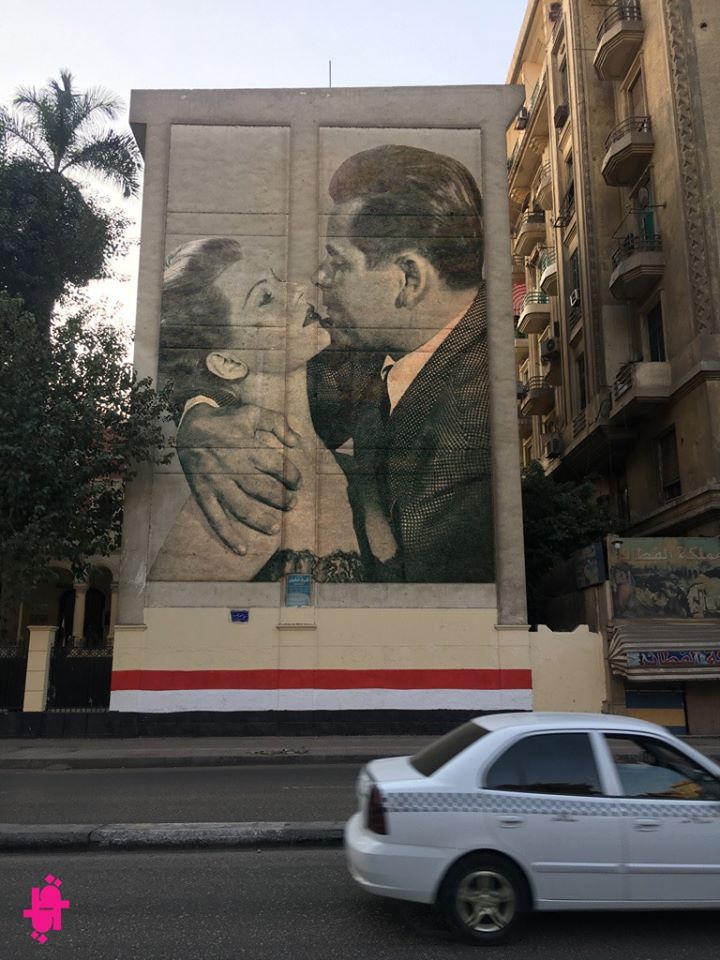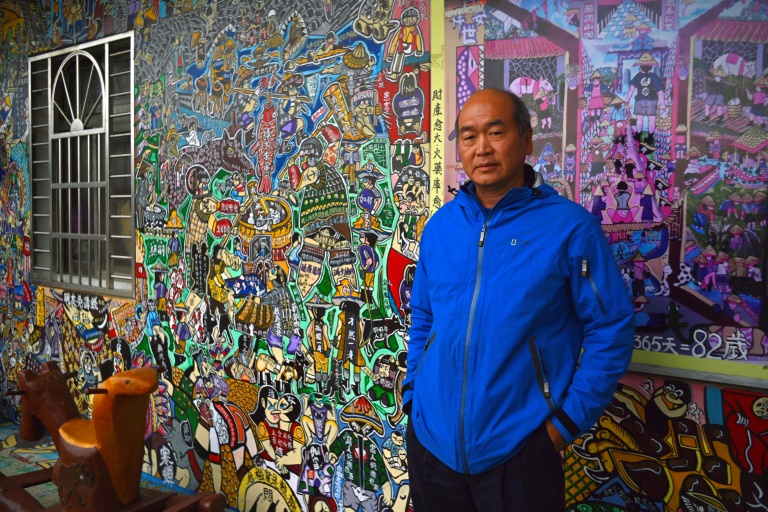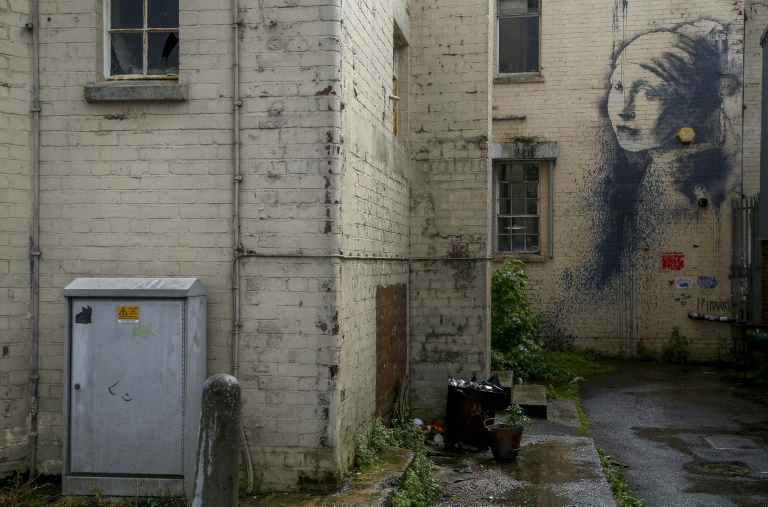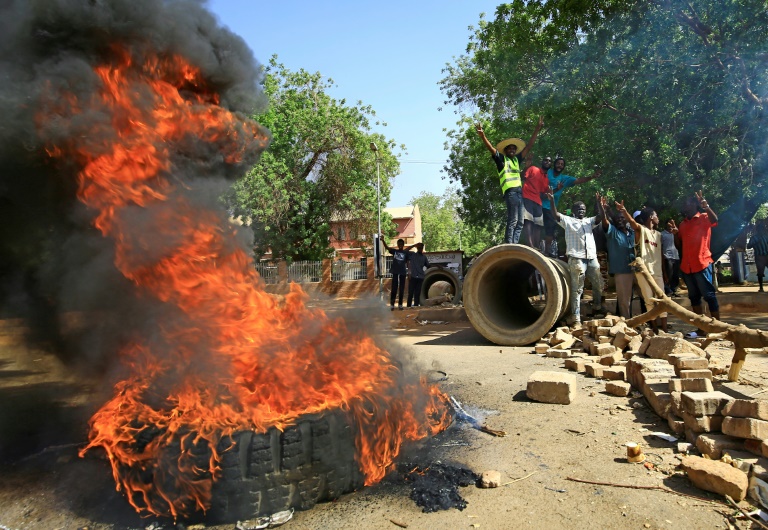
Ganzeer has been pretty much living in Safarkhan gallery since 7 September. First he was hanging wooden panels of varying shapes and sizes on the walls of the ground floor, then he started painting on them. Egypt Independent visited last weekend, when there were 10 days left until the opening of his show, “The Virus is Spreading.” There were already big splashes of bright color and larger-than-life figures, full of both references to his previous work and his trademark sarcasm, brash and political.
One of the central elements in “The Virus is Spreading” is a cat, representing Egyptians.
“They’ve had it rough. They were dieties and now they’re scavenging for chicken skins,” he explains. “The status of the cat and the people go hand in hand.”
A bandaged, haloed cat painted on a panel, one of the first things you see when you walk in, is accompanied by the words (in Arabic) “One day they kick me, then they turn me into hawawshi. It looks like they’ve forgotten my importance but I’m going to do the right thing. I won’t let them kill me. I’m going to stay alive, not for me but for them.”
Safarkhan is a small old-school commercial gallery in the upmarket neighborhood of Zamalek. Ganzeer is the nom de guerre of Mohamed Fahmy, a young energetic multifaceted artist whose production spans various media and disciplines from graphic design to writing to street art. Although already a seasoned art maker, his international renown increased dramatically when he made some pioneering revolution-related graffiti in 2011.
His work is ideological and to a certain extent site-specific. In this case, the exhibition is an installation –– or the embodiment of an idea. Downstairs the “counterculture” is represented by the Egyptian street, with imagery spilling off panels onto the wall and ripped posters Raymond Hains style. Upstairs, the establishment is represented by the kind of old-school hang that normally characterizes Safarkhan shows: individual paintings on white walls. Within this simple symbolic dichotomy he has set up, Ganzeer has given himself space to improvise.
He is joining a long line of artists who have attempted to recreate the impression of something that is not art in a gallery. As with a lot of installation art, this work will have an emphasis on the viewer’s presence in the space, and Ganzeer wants it to be like a cinema or theater experience. But while installation work often emphasizes the importance of each audience member’s subjective experience, here the message will be quite unambiguous. And while installation art has historically tended to work against the market, being ephemeral and wholly site-specific, in this exhibition the individual parts will be for sale –– so you might end up with a shoulder or single word from the show on your living room wall.
Ganzeer says he wants the work downstairs to recreate the “overstimulation you get on the street” –– and is thus using various styles and media from paint and marker pen to collage –– but he is clear that the work is not meant to be street art. Indeed, the installation is almost entirely created by Ganzeer himself and doesn’t incorporate found objects or the work of other street artists – though he is letting visiting friends tag the walls.
The ripped posters are nearly all his own (including one from his first solo show, “Everyday Heroes,” at the Townhouse Gallery in 2007). And his work is undeniably artier than that say, of the Ultras – the hardcore football fans who have created a lot of protest graffiti since the 25 January revolution, some very naïve looking, some more sophisticated. So “The Virus is Spreading” presents a fantasy version of the street, in keeping with Ganzeer’s interest in comics, his creation of fake advertisements, his imagining of unlikely situations in order to shed light on reality.
“I was getting bored,” says Mona Said, who co-runs the gallery with her mother Sherwet Shafie. She says this show –– moving away from more traditional painting shows –– is part of a new direction for the gallery, motivated in part by seeing some great work by young artists from the Gulf.
“Mona approached me and said she wanted something cool,” Ganzeer says, explaining that he thought of the concept for the exhibition after her invitation. In terms of audience, he says he wants to both introduce something new to Safarkhan’s art buying crowd, and introduce a new crowd to this gallery –– including school kids and university students.
Ganzeer never underwent any formal art education, but did a business degree at Banha University, which he says was quite useless. He learned to draw from “How to Draw Comics the Marvel Way” by Stan Lee and John Buscema, which he says was great. Regardless, he has developed a distinctive style for making art that is much in demand.
Political concerns are always at the forefront of the work, and his subjects vary according to where he is making it – a piece made in Frankfurt in April featured child soldiers wielding machine guns made of euro notes. While he has been super-active in Egypt, he often also makes work in support of cultural practitioners elsewhere, like Nour Hatem Zahra, the “Spray Man” killed by Syrian security in April, and Pussy Riot. His work is often anti-military –– all militaries. He also organizes a lot of things, such as a zine, a map of Cairo’s graffiti, a graffiti week and a space in an empty shop in downtown, where art will be nearly on the street (to open early 2013).
“The Virus is Spreading” looks like it will be fun, exuberant, graphic and angry –– a good combination for right now. And somehow, I think it will offer some optimism on the state of Egypt’s ongoing revolution.
“The Virus is Spreading” opens at Safar Khan gallery on 1 October at 6.30 pm and will run until 1 November.





